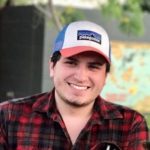In Rush To 'Debunk' Wuhan Biolab Theories, Media Overlooked Frightening Possibility
In the earlier days of the global coronavirus pandemic, theories were floated that the SARS-CoV-2 virus didn’t originate from a wet market in Wuhan, China, but from a nearby biological research lab.
The establishment media was quick to combat this narrative, slamming the claims as conspiratorial and without proof.
Arkansas Sen. Tom Cotton is a particular favorite of these media “fact checks” after he continued floating the possibility that the virus could have escaped from the Wuhan facility.
For simply putting this theory in the open, he was scorched.
Vox seemed to lump Cotton in with commentators and politicians who are “known to regularly spew nonsense (and bash China)” for the claim.
Similarly, Business Insider criticized Cotton for pushing a theory that the virus is a “leaked Chinese biological weapon,” despite the senator never making that claim. A clip in the article shows Cotton confirming there is no solid proof of the biolab leak, and stressing the need for more evidence.
Even the usually reliable Reuters jumped into the fray, shamelessly pushing the Chinese government’s own propaganda by warning that theories leading back to the lab are “hurting efforts” to stop the coronavirus.
While most experts agree that the SARS-CoV-2 virus doesn’t appear to be genetically engineered, that doesn’t let the Wuhan biolab off the hook by any means.
After all, nature is pretty nasty on its own.
The Black Death, from a naturally occurring bacteria, ravaged Europe and Eurasia. The Spanish Flu may have been helped in its spread by international wars and long-distance travel, but it too was a product of the unforgiving process of natural selection.
To understand how that ties into a previously obscure Chinese laboratory, it’s important to take a look at what was happening inside Wuhan’s biological facilities. Studies published months before the outbreak prove that one location, the Wuhan Institute of Virology, worked closely with the most dangerous bat coronaviruses.
“It is generally believed that bat-borne CoVs will re-emerge to cause the next disease outbreak,” Chinese researchers wrote in March 2019. “In this regard, China is a likely hotspot. The challenge is to predict when and where, so that we can try our best to prevent such outbreaks.”
To study these deadly pathogens in the hopes of creating vaccines and treatments, researchers would surely need samples. Thankfully, China is full of bats.
The SARS outbreak of the early 2000s was originally covered up by the communist government before the world found out. When the dust settled, the virus was tracked back to a remote colony of bats in southern China.
Samples collected from similar colonies across the country would likely have given scientists plenty of exotic material to work with. Whittling down the viruses to find which germs have the most potential for a pandemic and then working on a cure would probably be the next step.
We now know that the virus that causes COVID-19 is particularly persistent. It can live on some surfaces for over two weeks, and is easily spread through the air.
All it would have taken is a single careless employee, perhaps rushing to make it to the Wuhan wet market before closing time, to spark a deadly global pandemic.
Truth and Accuracy
We are committed to truth and accuracy in all of our journalism. Read our editorial standards.












